Retired U.S. Navy SEAL Jocko Willink is famous for exhorting his audience to be the best possible version of themselves, an enterprise that necessarily involves lots of self-discipline and, above all, hard work.
Although the SEALs are famous for enduring the world's most grueling training and operations, with little to no sleep, the daily grind is not a special operation. When it comes to optimizing productivity, health, and wellness, human beings have sharply-defined limits – anyone who wants to sustain hard work needs to rest effectively, too, because otherwise burnout is inevitable.
Introducing Jocko Magnesium
As it turns out, human beings' ability to relax -- and most importantly, sleep — is dependent largely on their intake of one special mineral:
Magnesium.
We recently hosted Jocko Willink on Episode #132, and at the end of the video, he took us through his entire day's supplement stack. Mike had one suggestion for him -- add the new Jocko Magnesium to the end of his day's routine to improve sleep.
We love to get our nutrition in through food, but when it comes to this mineral, that's just not a reality. Today, we dive into the reasons why, how we can help fix it, and what the benefits of taking more magnesium are.
Fixing our magnesium issues
There's some good news and bad news when talking about the West's collective magnesium status.
Bad news first. Our food contains less magnesium than ever before, thanks to short-sighted agricultural practices that deplete topsoil's mineral content. It's not a small loss, either. Our food has lost an estimated 80-90% of its magnesium during the past century![1-6]
To make matters worse, caffeine is known to increase the rate of magnesium elimination from the body,[7] and there's no shortage of caffeine use in modern society.
The good news is that magnesium status can be easily fixed.
So, let's get into how Jocko Magnesium can help, and a bit about the specific sources inside. First, check PricePlow's product availability and coupon-based deals, and sign up for our Jocko news alerts:
Jocko Fuel Magnesium – Deals and Price Drop Alerts
Get Price Alerts
No spam, no scams.
Disclosure: PricePlow relies on pricing from stores with which we have a business relationship. We work hard to keep pricing current, but you may find a better offer.
Posts are sponsored in part by the retailers and/or brands listed on this page.
This area is reserved for Team PricePlow's upcoming videos.
Subscribe to our channel and sign up for notifications so you catch it when it goes live!
Each 3-capsule serving gives you 300 milligrams of elemental magnesium -- this is the yield of the product. 300 milligrams is 71% of the recommended daily value.
First, let's look at the sources of magnesium:
Jocko Magnesium Sources
Of the 300 mg serving size, you get:
- Magnesium Citrate: 128 mg
- Magnesium Glycinate: 100 mg
- Magnesium Threonate: 72 mg
Each of these has their own separate effects, but that's where the magnesium is coming from. Let's break it down, starting with the overall benefits of the mineral, and then get into the specific added bonuses of the latter two.
Jocko Magnesium: The Benefits of Magnesium
Magnesium is a key electrolyte mineral that's implicated in over 600 different metabolic reactions in the human body, including such fundamental processes as cellular energy production and ribosomal protein synthesis.[8] It's not a shocker, then, that even slight shortfalls in magnesium intake can have devastating consequences for personal health.
-
Neurological and cognitive health
Magnesium plays an indispensable role in neurotransmitter production.[9] Obviously, neurotransmitters are crucial for cognitive health and performance — as well as sleep. Since magnesium ions are involved in gamma aminobutyric acid (GABA) signaling[10] (GABA being a pro-relaxation, anxiolytic neurotransmitter), supplementing with magnesium can often improve sleep quality.
This matters because chronically disordered sleep is a major risk factor for numerous problems.[11] For instance, a 2015 study found that even a slight magnesium-intake shortfall in men and women under the age of 65 is linked to a 22% increase in risk of depression.[12]
Recall that GABA is an inhibitory neurotransmitter that antagonizes the action of glutamate, your brain's primary excitatory neurotransmitter. These two neurotransmitters need to be balanced for optimal health. And in parallel to that, magnesium, a GABA-signaling facilitator, needs to be balanced with calcium, which facilitates glutamate signaling.
This is why many people, even upon taking magnesium for the very first time, feel an immediate and palpable sense of physical relief. Correcting even a mild magnesium deficiency can help restore the muscles' ability to relax, thus relieving tension in the most literal possible way.[13,14]
There's even an entire meta-analysis and systematic review on magnesium's support for subjective anxiety and stress![15] At this point, the data is simply too voluminous to ignore.
On the flip side, if a magnesium deficiency goes untreated, it may cause more downstream problems that are commonly linked to stress and anxiety. And, unfortunately, if the deficiency goes on long enough, it can potentially contribute to chronic fatigue.[9,16,17]
This alone makes it worthwhile. But we haven't even scratched the surface:
-
Impact on sleep and cortisol
We've already touched on supplemental magnesium's ability to improve both the amount and quality of sleep you get.[18,19]
But there's another mechanism at play in this relationship: magnesium's ability to decrease the production of cortisol, your body's primary glucocorticoid stress hormone. We live in a fast-paced, 24/7 interconnected world, and unfortunately, many of us are dealing with chronically elevated cortisol. If that's you, then magnesium supplementation might help you sleep better.[19]
One especially intriguing study discovered that magnesium intake has an inverse correlation with sleep midpoint. In other words, people who consume enough magnesium are able to fall asleep earlier than those who don't.[20]
-
Metabolic Support
We focused on sleep and mood because those are two of the most obvious and immediate benefits from taking magnesium supplements, but there are plenty of others as well.
Again, since magnesium is involved in such a dizzying array of cellular-metabolic functions, it's not that surprising that reversing your magnesium deficiency could have far-reaching effects on so many different aspects of health.[21-23]
The average amount of calcium, magnesium, and iron in vegetables like spinach, lettuce, cabbage, and tomatoes has plummeted as much as 80–90% since 1914.[1] Sadly we have to supplement it back in.
These beneficial effects include, but are not limited to:
- Decreased blood pressure[24-27]
- Lower HbA1c and improved glycemic control[24,28,29]
- Higher insulin sensitivity[24,28-30]
- Properly regulated insulin signaling[24,28-30]
- Decreased risk of type 2 diabetes[31-33]
When dealing with anyone in the diet world, checking on magnesium supplementation and use is one of the first things to do. There's just too much that can go wrong when you're not getting enough.
-
Athletic-Related Benefits
It wouldn't be a Jocko article without getting into athleticism. Here, the benefits aren't always direct, but there are some highly-related:
- Higher bone mineral density[34]
- Faster lactic acid (lactate) detoxification[35]
- Increased lean mass and athletic power[36]
- Mitigation of exercise-induced stress and muscle damage[37,38]
Read about the Jocko Pre-Workout on PricePlow
So next time you're tearing yourself up in the gym with Jocko Pre-Workout or on the mats Jocko GO Energy Drink, think about the recovery process, and having some Jocko Magnesium before bed is definitely a piece of that puzzle we'll always recommend.
Sweating? Stack in Jocko Hydrate
This is especially true if you're physically active or perspire a lot, since magnesium, like all electrolyte minerals, is eliminated from the body in sweat.[39] On that note, if you're sweating a ton when training, consider Jocko Hydrate, which has 120 milligrams of magnesium (29% DV) from magnesium citrate. Combined, the Jocko Hydrate + Magnesium stack gets you to 100% DV!
Other benefits of magnesium
Magnesium's list of clinically-researched benefits isn't over -- there's a lot more happening that you may wish to dig into:
- Decreased PMS-symptom severity[16,40-42]
- Lower C-reactive protein[43]
- Decreased interleukin 6 (IL-6)[44]
- Decreased inflammation[36,43]
- Decreased risk and severity of migraines[45,46]
- Improved migraine symptoms[47]
Suffice it to say, you really want to get your magnesium in check if optimizing health is your goal. Entire books are written about this stuff - just do it.[23,48]
Now let's talk about auxiliary benefits from two of the forms of magnesium.
Magnesium glycinate – (100 mg yield from ~775 mg total material)
Magnesium glycinate is a highly bioavailable form of magnesium where the mineral is bound to the amino acid, glycine.

Jocko Willink joins PricePlow for Episode 132 to talk about founding Jocko Fuel, doing the right thing when formulating supplements, and Jocko's entire stack from start to finish
Whereas minerals like magnesium aren't absorbed well by the small intestine, amino acids like glycine are. For this reason, binding magnesium to an amino acid – a process called chelation – is an excellent strategy for increasing your body's overall absorption of the mineral.
Studies quite consistently show that mineral bioavailability — in general, not just magnesium's — is improved by chelation. In one study that did pit magnesium glycinate against magnesium oxide, the chelated form dramatically outperformed magnesium oxide.[49]
What's even better is that the glycine has its own benefits, and since magnesium glycinate consists of roughly 13% magnesium by weight, in order to get 100 mg elemental magnesium, we can deduce that there's 775 mg of total magnesium glycinate in a single serving of Jocko Magnesium.
That means we're getting 675 mg of glycine per serving – a dose that's definitely big enough to be worth writing about.
Glycine's sleep benefits
Given that there are hundreds of different amino acids in existence, and that no less than 20 make up the proteins in the human body, it's logical to ask why glycine? Of all the possible aminos to chelate magnesium, why this one?
Part of the answer is that glycine is particularly important for human health and wellness. It accounts for roughly 12% of the body's total amino acid stores.[50] Glycine plays an integral role in your body's synthesis of key proteins, especially collagen and elastin, which the body uses to create connective tissue.[50]
Another reason it's logical to pair magnesium with glycine is that these two molecules have broadly similar effects on the human body. For example, both have significant anxiolytic potential, and have been shown to benefit sleep quality.[51-54]
In one 2006 study, after subjects had taken glycine before bed for four consecutive days, researchers had them fill out a questionnaire designed to quantify otherwise-subjective experiences like "fatigue," "clear-headedness," and "liveliness and peppiness."[51] Relative to the placebo group, the participants who took glycine enjoyed significantly more restful sleep and reported feeling much more energetic when they woke up in the morning.[51]
A similar study published in 2007 had 11 volunteers take either 3 grams of glycine or a placebo at bedtime.[54]
This study used the the following inventories to quantify how satisfying the subjects' sleep was:
- The Pittsburgh Sleep Quality Index (PSQI), which is probably the most commonly-used sleep inventory, and the St. Mary's Hospital (SMH) inventory. Participants were also hooked up to polysomnography machines, which monitored brain activity by tracking electrical impulses, movement, and vital signs.[54]
- The Stanford Sleepiness Scale (SSS), visual analog scale (VAS), and a memory test assessed the impact of the subjects' sleep quality on daytime cognitive performance.[54]
The study found that glycine-supplemented subjects felt more satisfied with their sleep, compared to the control group. The glycine group reported falling asleep faster and with greater ease,[54] a report that was confirmed by the polysomnograms.
The polysomnograms also indicated that the glycine group enjoyed a longer average period of deep sleep, suffered fewer midnight awakenings, and had significantly smaller sleep onset latency than the placebo group.[54]
This greater sleep quality was reflected in the subjects' daytime SSS and VAS results, which indicated that the glycine group was significantly more alert and performed much better on cognitive tests than the placebo group.[54] The glycine group also outscored the placebo group on the mid-day memory test.[54]
A followup 2012 study, published in the journal Frontiers in Neurology, replicated these results and also found that the cognitive benefit from glycine supplementation persisted for multiple days after the end of the study.[55]
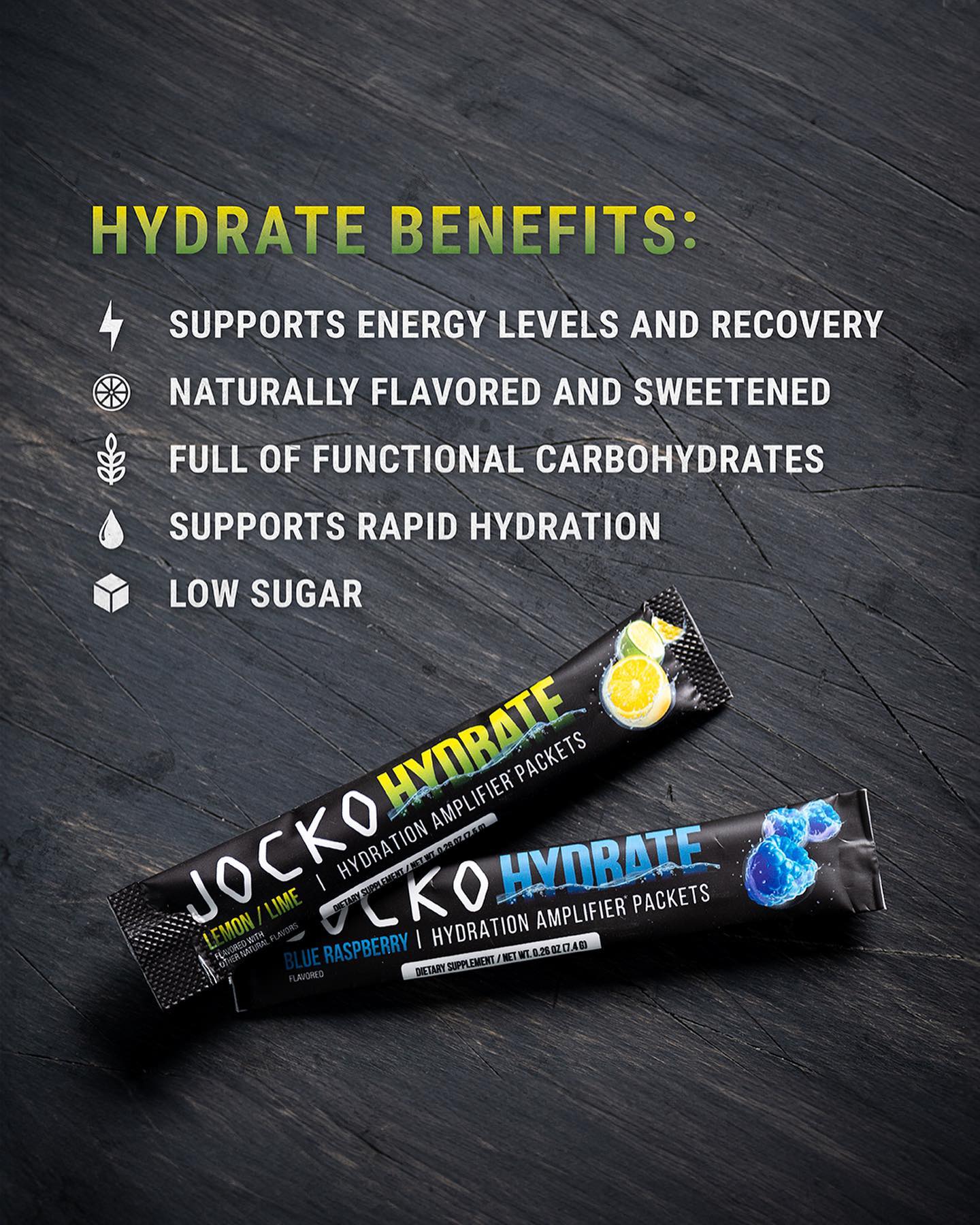
Add one stick of Jocko Hydrate to get to a perfect 100% DV magnesium!
Granted, we don't have 3 grams of glycine here, but the amount we do have can certainly help. If sleep is of interest to you, then adding some glycine powder to a nighttime beverage is a good idea to test -- it's a sweet-tasting amino acid, which doesn't hurt either!
Glycine's other benefits
Besides improving sleep quality, glycine has other benefits, as well. Research suggests that glycine can:
- Improve neuropsychiatric symptoms.[56,57]
- Improve glycemic control[58]
- Inhibit muscle breakdown (catabolism) during starvation and illness[59,60]
- Inhibit platelet aggregation[61]
- Improve cardiovascular health[62]
Long story short, we're big fans of glycine, we're even bigger fans of magnesium, so we're huge fans of magnesium glycinate, and we're glad Jocko Fuel used it.
Magnesium Threonate – 72 mg
Magnesium threonate (MgT) is, like magnesium glycinate, a chelated form of magnesium – here using the amino acid threonine instead of glycine. What makes the threonate form special is its exceptional ability to cross the blood brain barrier, as demonstrated in a 2010 study where it successfully increased the concentration of magnesium in rat brains.[63]
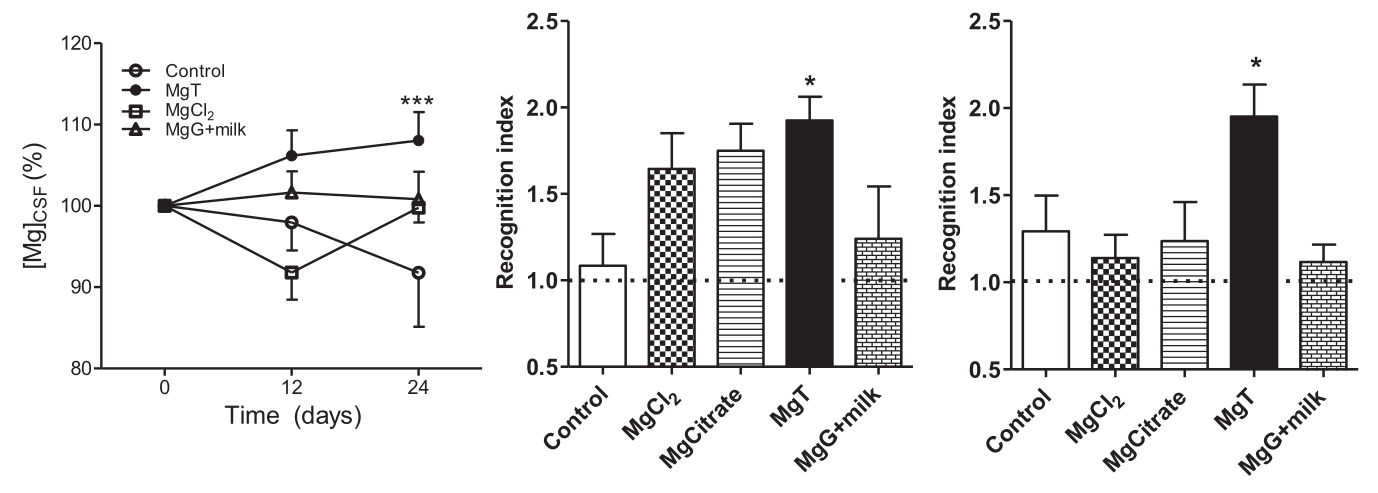
Magnesium threonate (MgT) outperformed other magnesium and threonate compounds when it came to increasing A) cerebrospinal fluid (CSF) magnesium concentration, B) short-term memory test scores, and C) long-term memory test scores in rats.[63]
The same study found that MgT supplementation also increased rats' performance on tests of both short-term and long-term memory, as well as spatial working memory.[63]
Part of the mechanism appears to be MgT's ability to increase neuroplasticity.[63] Researchers also found evidence that MgT can increase synaptic plasticity.[64]
Long story short? You can basically think of MgT as the nootropic form of magnesium. So we're happy Jocko included some.
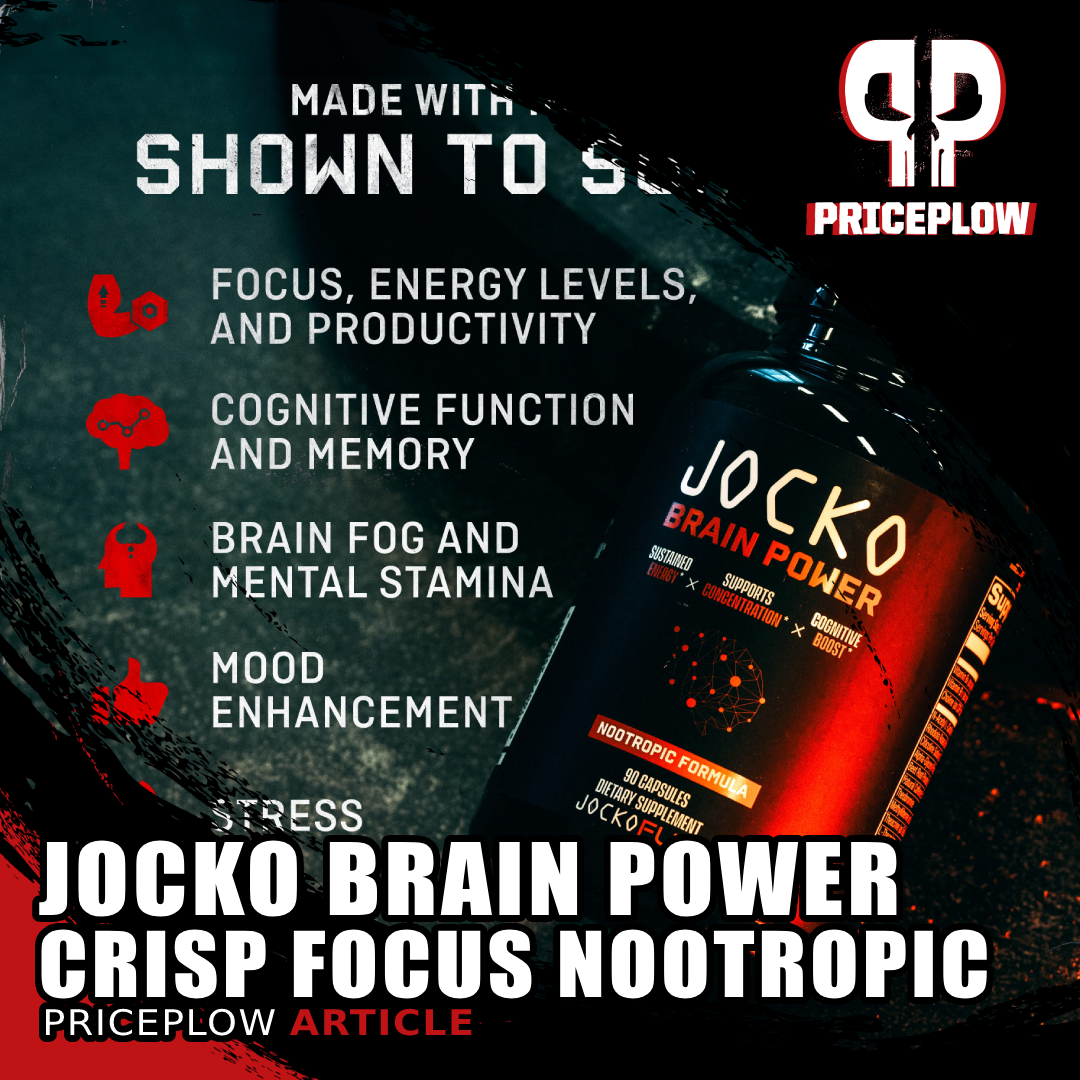
Jocko BRAIN POWER is a powerful nootropic with 100mg caffeine, providing CRISP focus thanks to 3 other xanthines (Dynamine, Theacrine, theobromine) and so much more!
And if you need even more focus, then check out Jocko Brain Power, their new nootropic supplement launched around the same time as Magnesium.
Dosage and Instructions
As a dietary supplement, take 3 capsules daily. We always recommend it before bed, especially with the magnesium glycinate inside, but it doesn't have to be at that time.
Don't miss our podcast with Jocko!
We sat down with Jocko himself at the Vitamin Shoppe Brand Summit for Episode #132 of the PricePlow Podcast and learned why he started Jocko Fuel. We also talk about his relationship with co-founder and chief product officer (CPO) Brian Littlefield (of Episode #111), who formulated this magnesium supplement.
Towards the end, we get into Jocko's stack, and that's where you can hear Mike suggest adding magnesium to the end of Jocko's day:
A cool bit of closure is that a couple hours later at the summit, Jocko found Mike and showed him a bottle of this magnesium, saying he was starting it that night! Boom, one person with better magnesium levels, 7 billion more to go!
Conclusion: Get your Magnesium, and Get it from Jocko
When it comes to maximizing health and wellness, there's possibly no higher ROI variable to optimize than your magnesium status. The risk-to-reward ratio is far in your favor. Once you've had too much, you'll notice looser stools, and if you weren't planning for that, you can simply back off by a capsule.
While magnesium citrate is a great form of supplemental magnesium for its oral bioavailability and cost-effectiveness, the citrate half of the molecule doesn't confer any notable benefits for health. However, the glycinate and threonate forms of magnesium do have some special benefits, as discussed above.
This one is pretty straightforward – in Jocko Magnesium there's plenty of magnesium per serving, all three forms used are highly bioavailable, plus we have some awesome auxiliary health support from the ample quantity of glycine present in a single 3-capsule serving.
If you want to hit that 100% RDA level, add Jocko Hydrate during training, post-workout, or any other time of the day... or just add a fourth capsule of this. Now you're set on magnesium, and it's time to GO.
Jocko Fuel Magnesium – Deals and Price Drop Alerts
Get Price Alerts
No spam, no scams.
Disclosure: PricePlow relies on pricing from stores with which we have a business relationship. We work hard to keep pricing current, but you may find a better offer.
Posts are sponsored in part by the retailers and/or brands listed on this page.

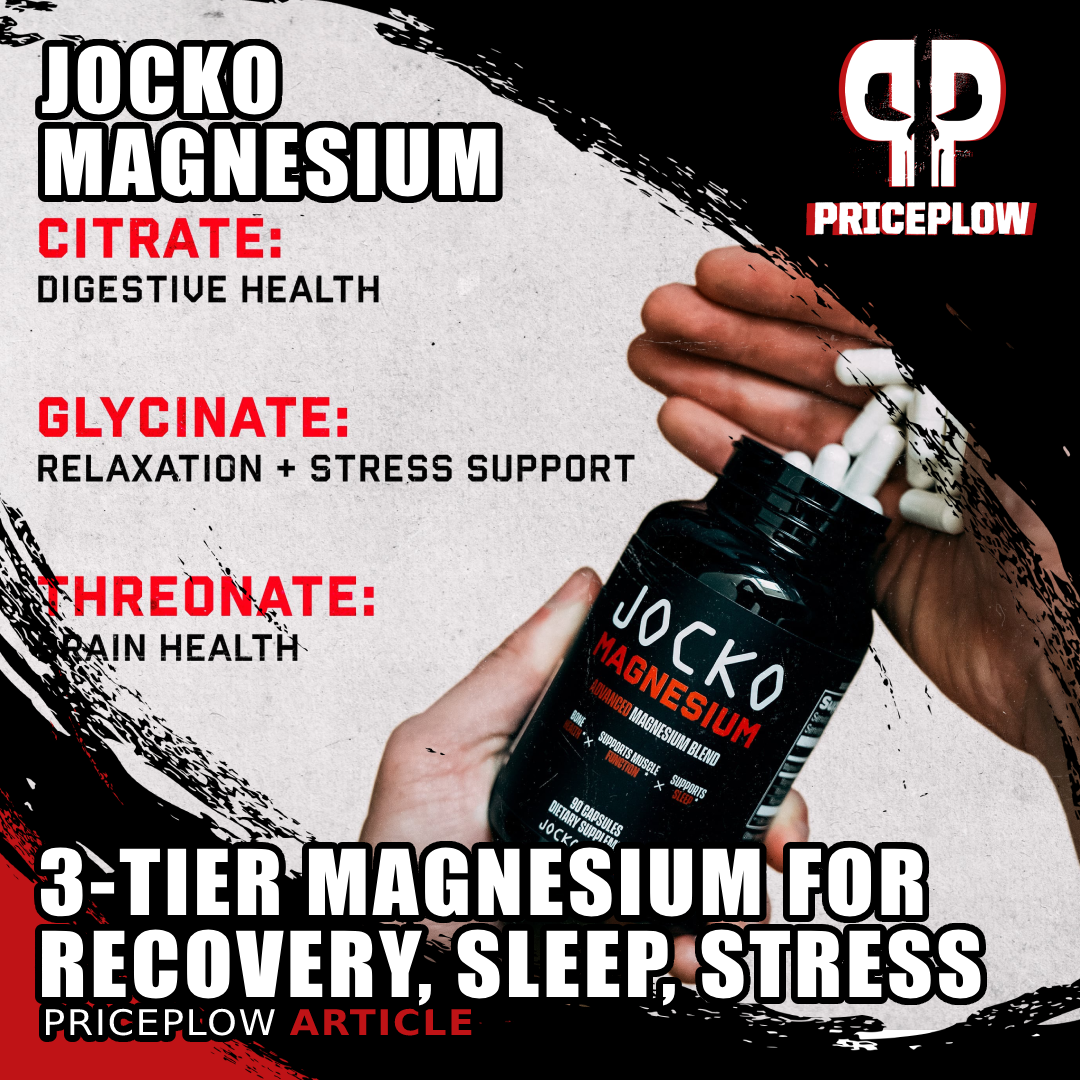
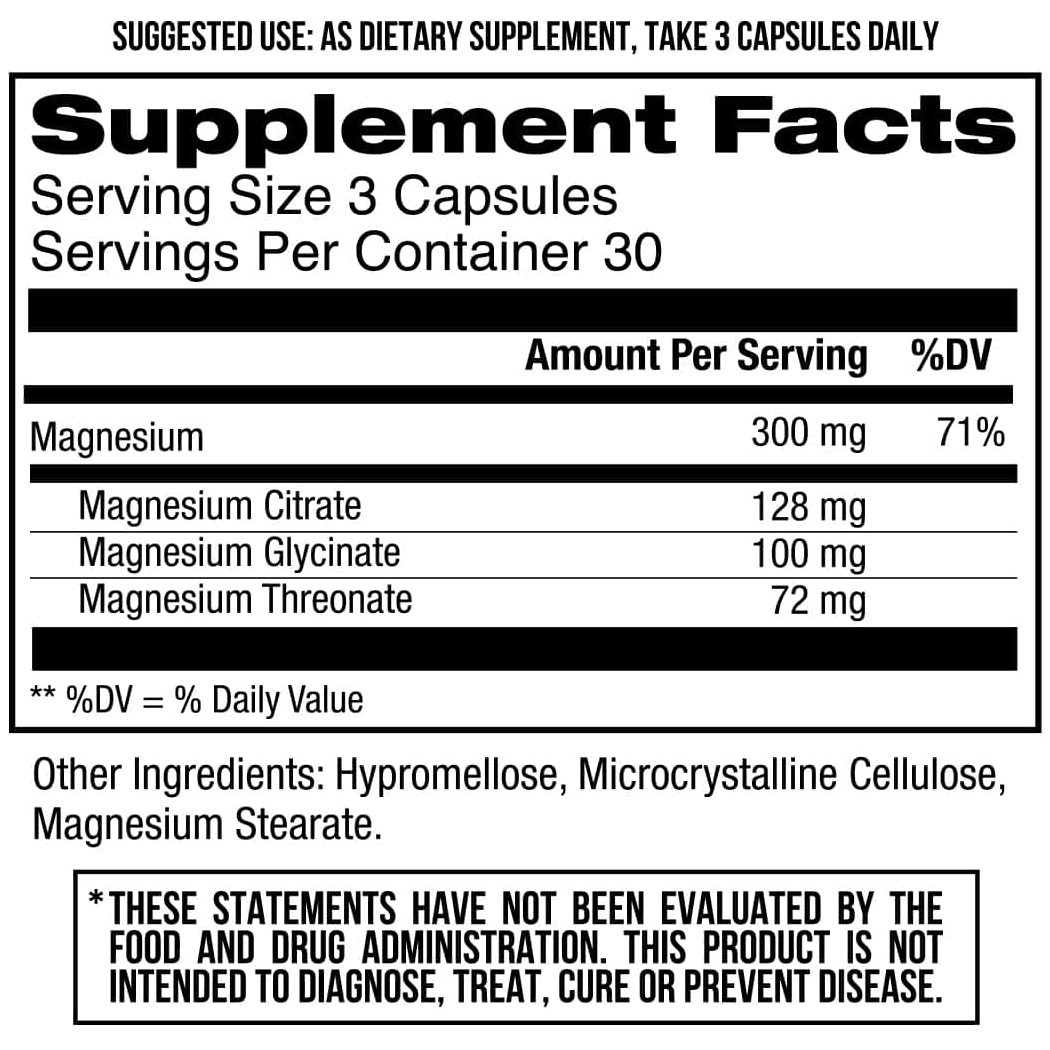

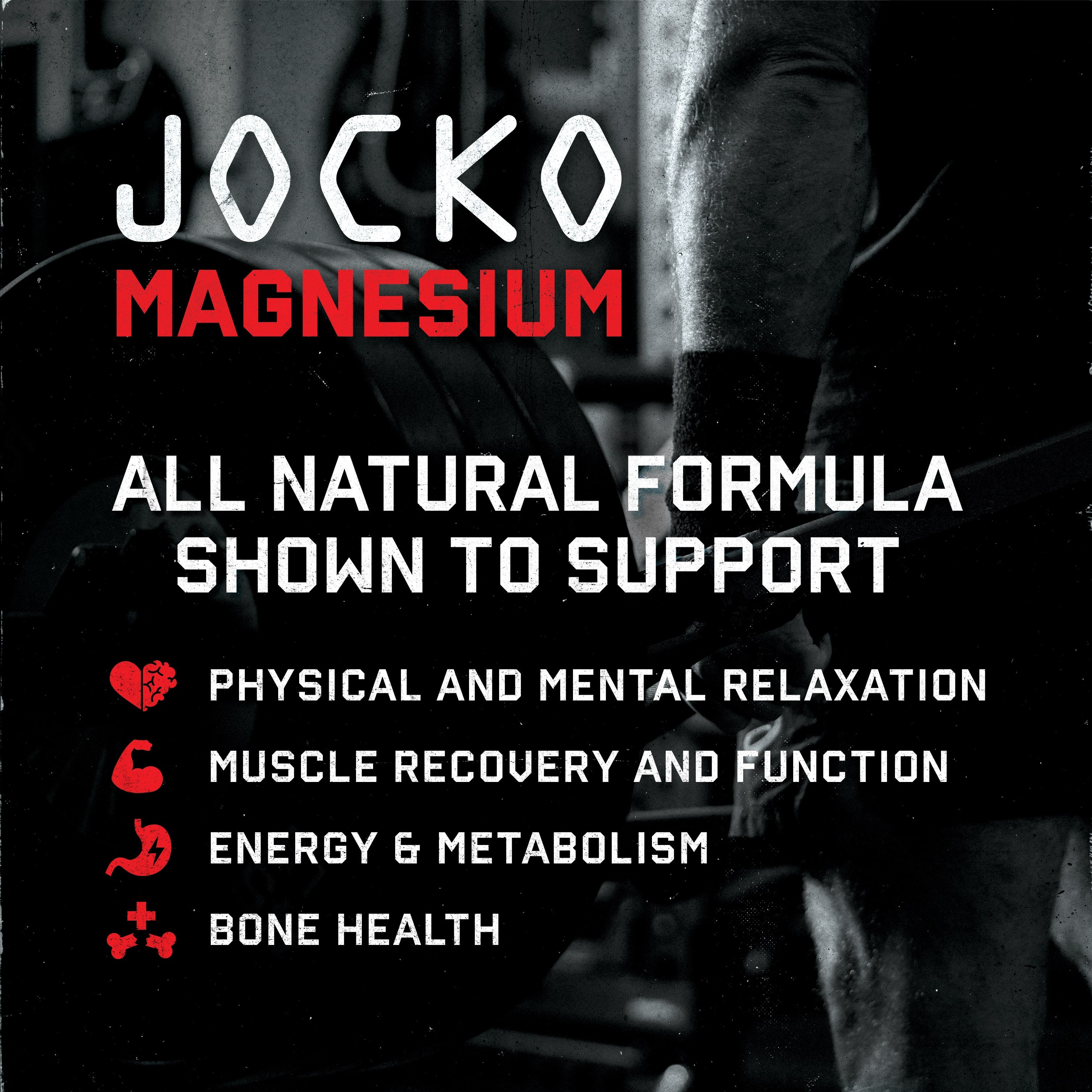
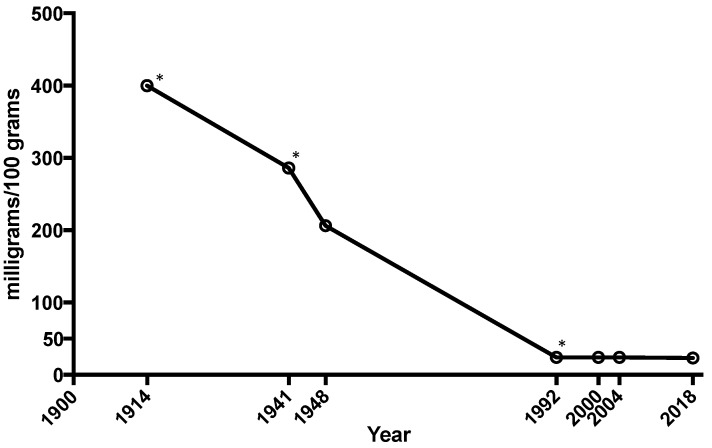
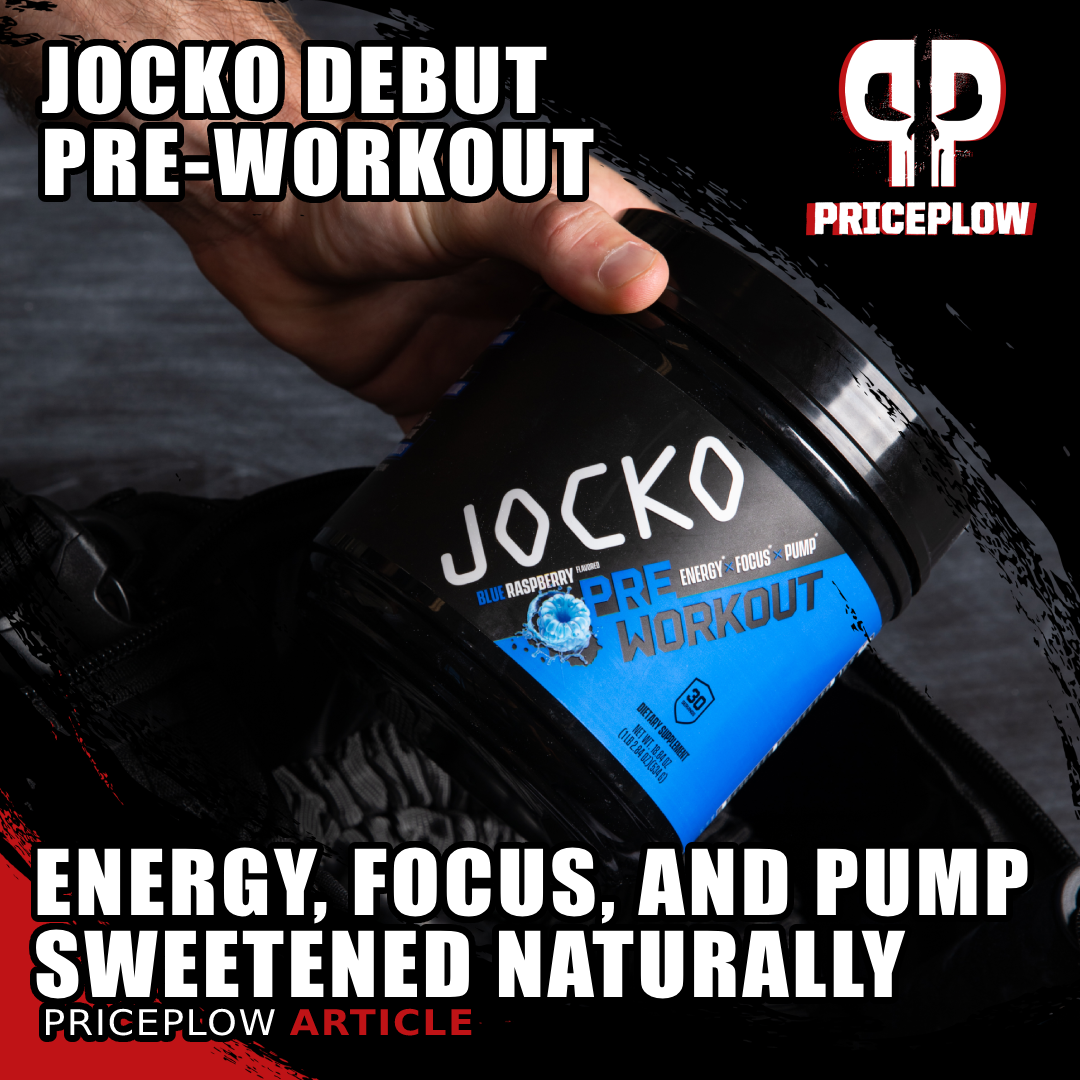
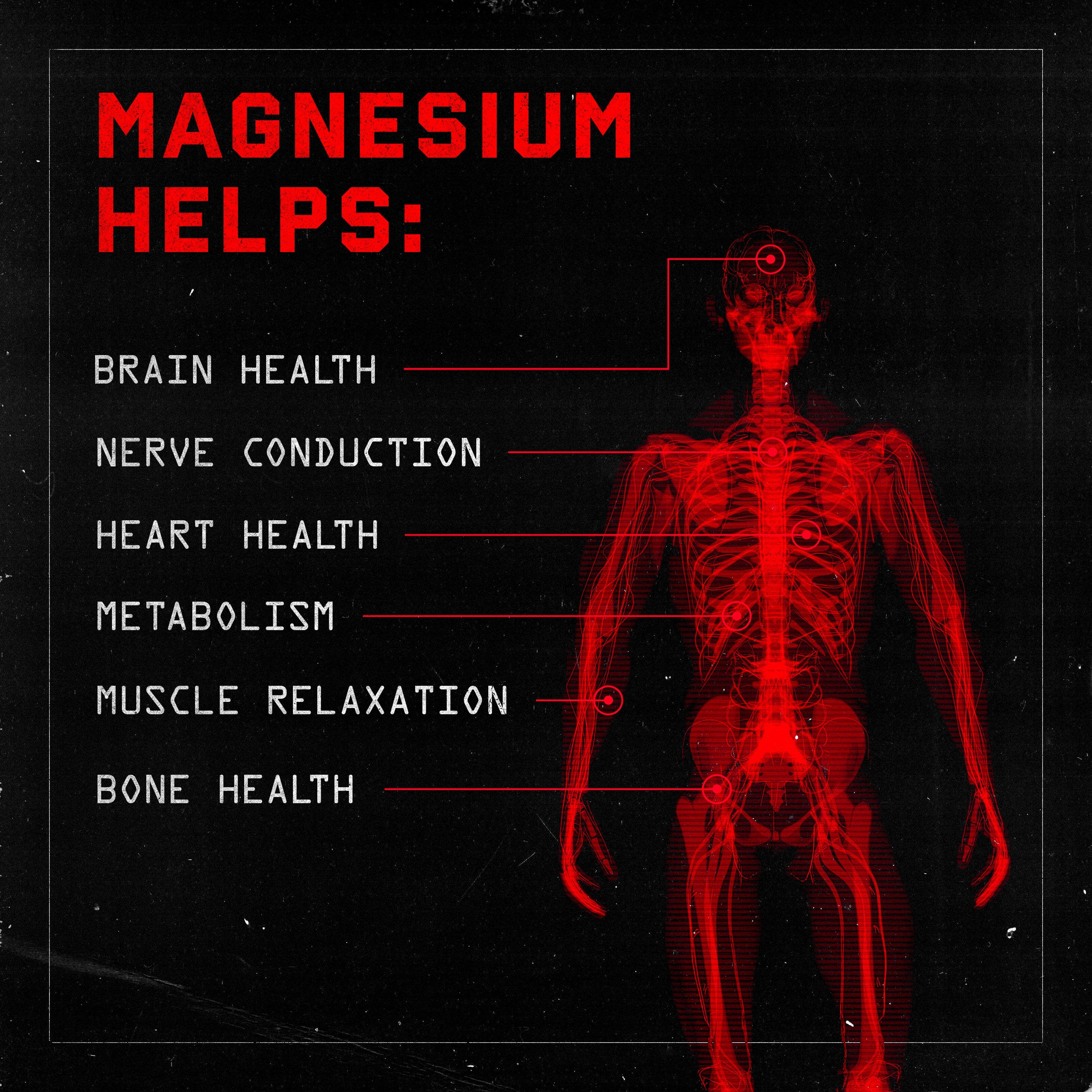

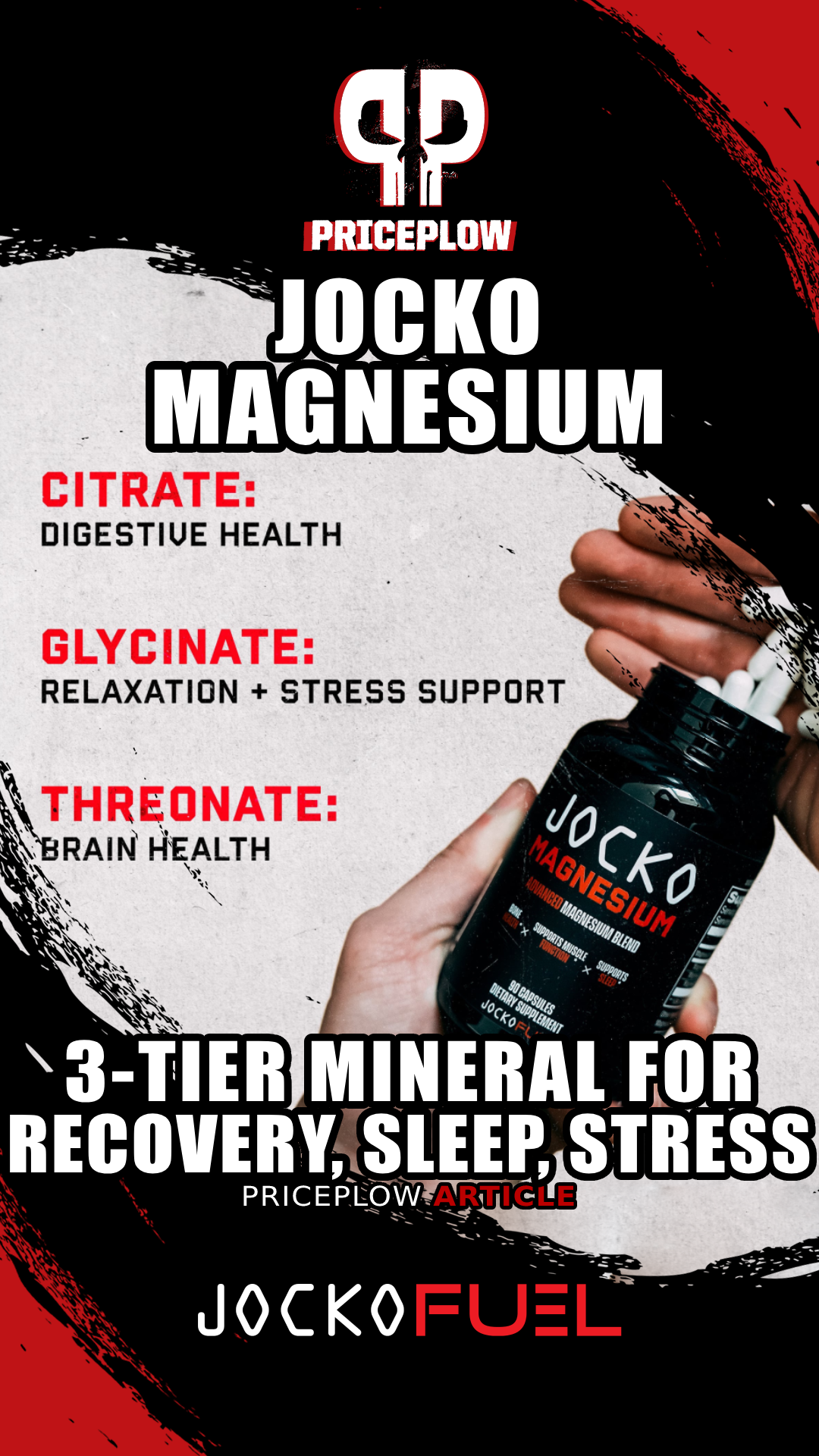


Comments and Discussion (Powered by the PricePlow Forum)